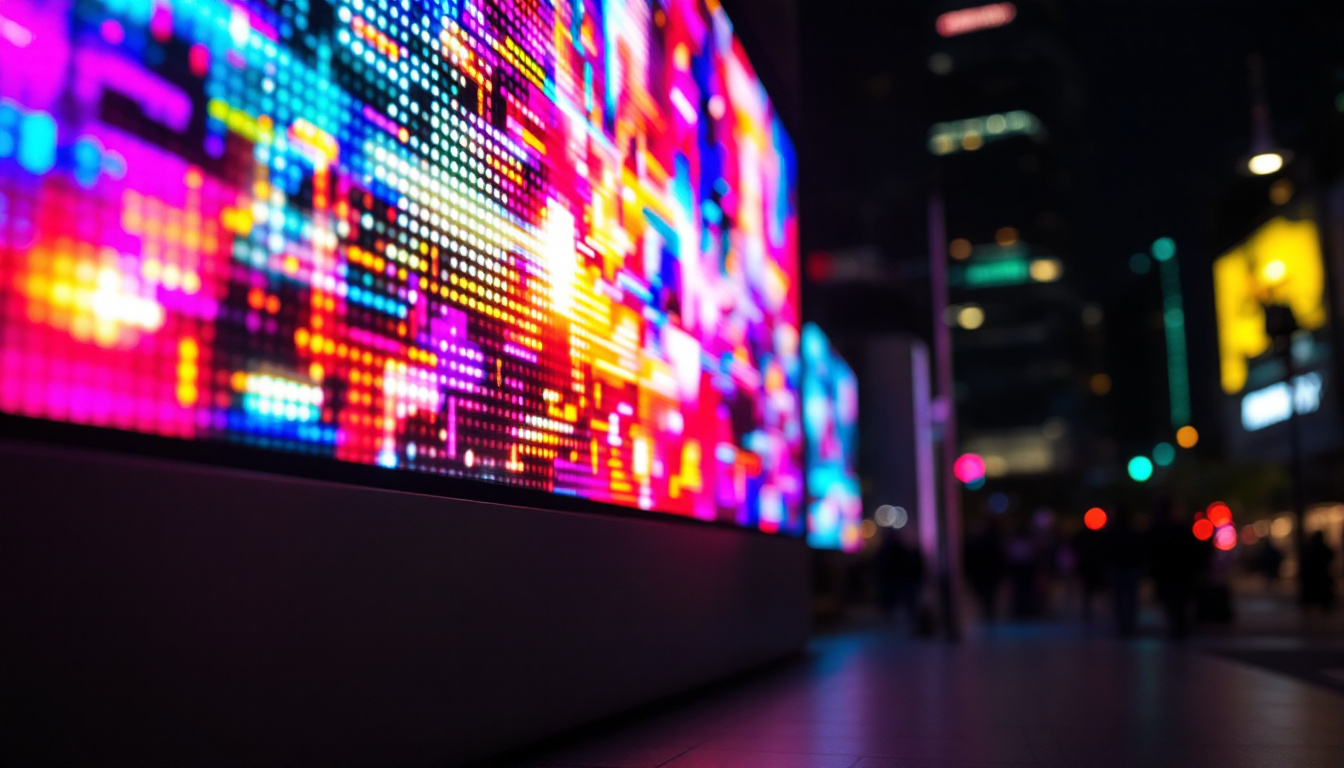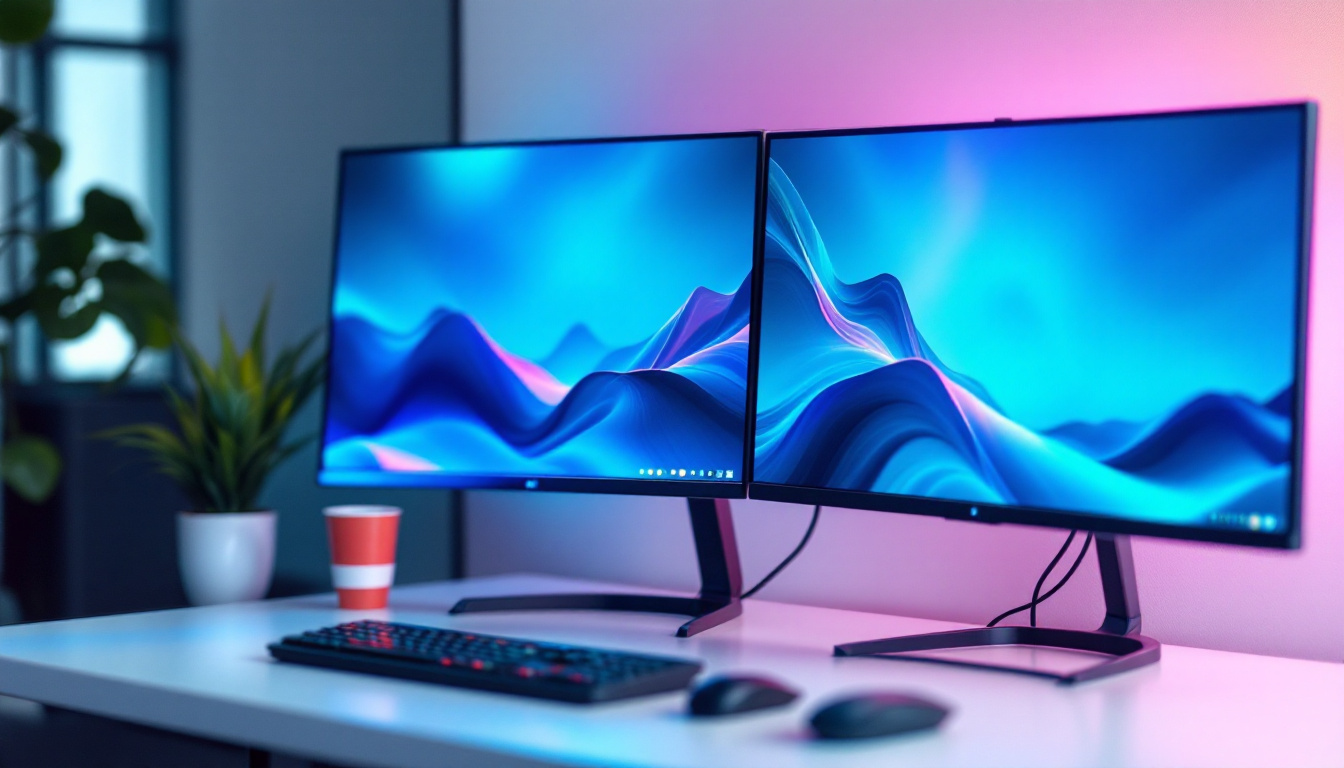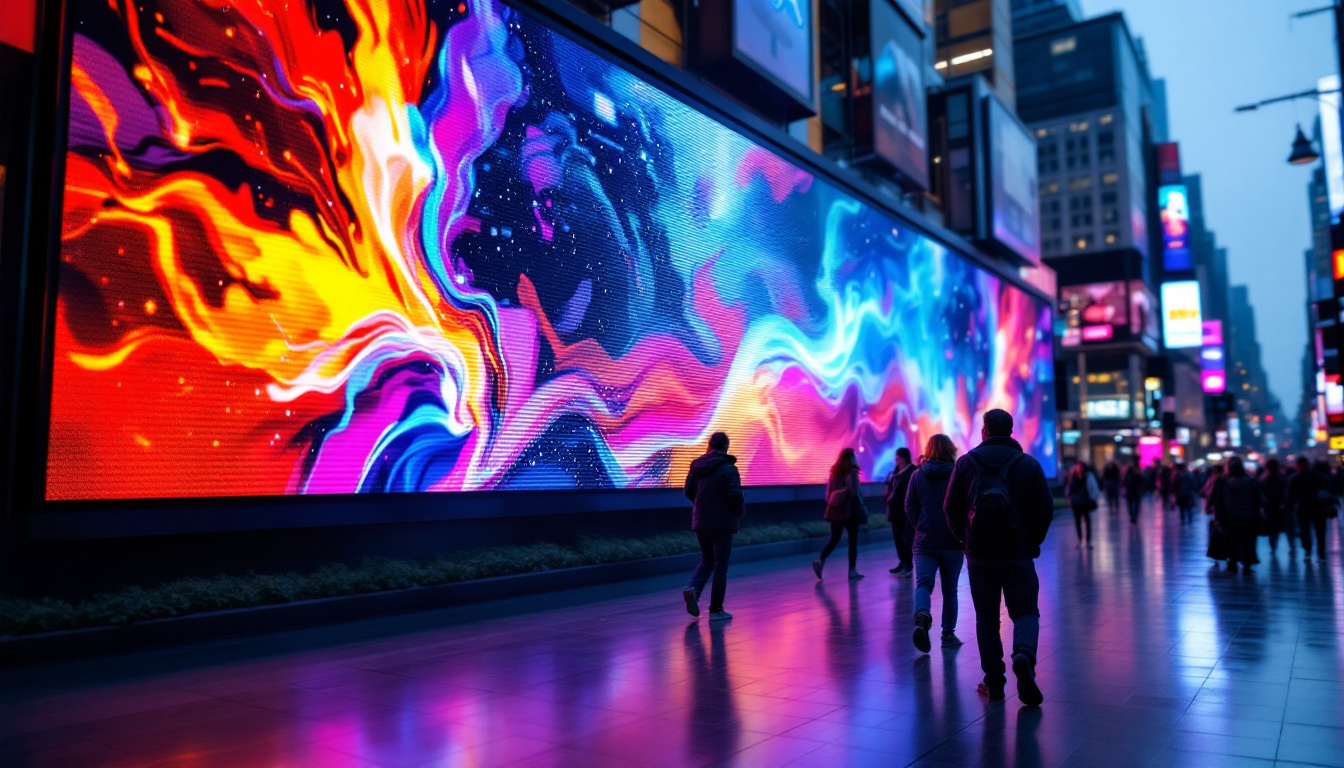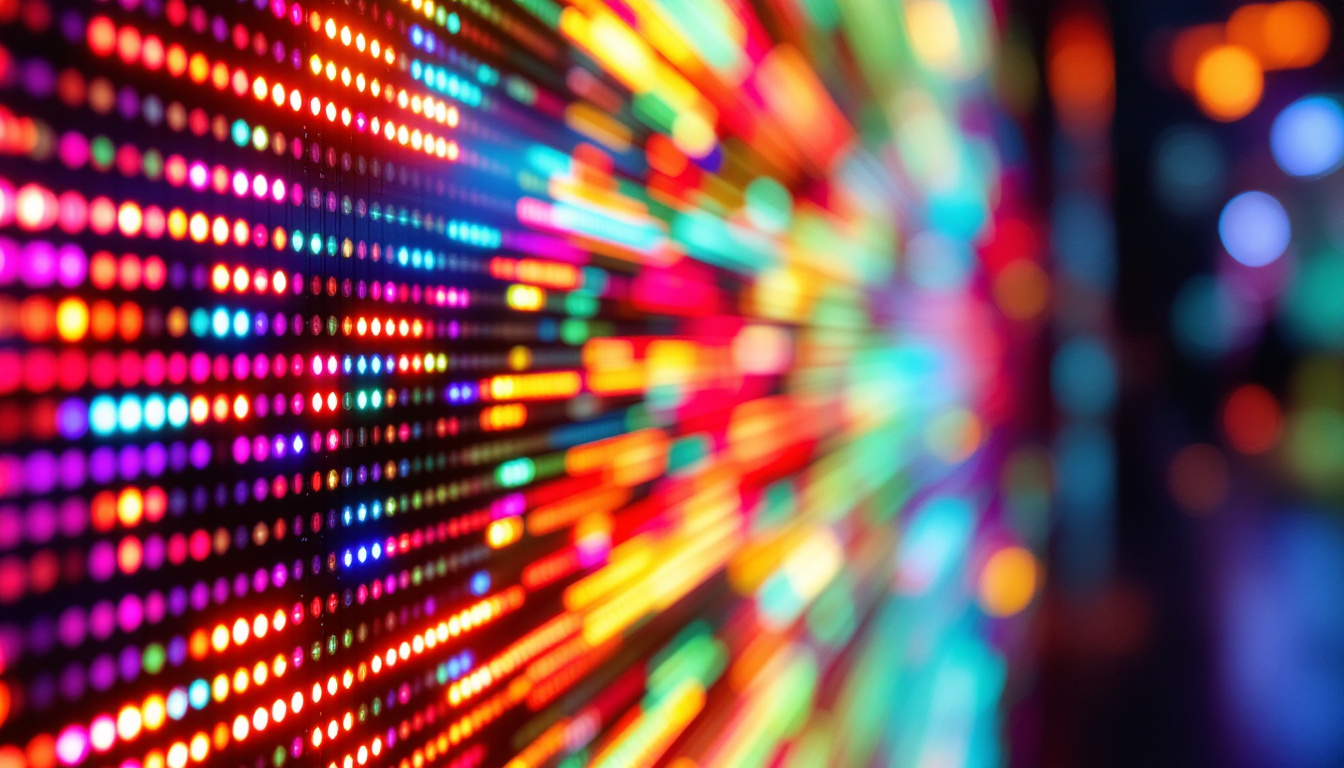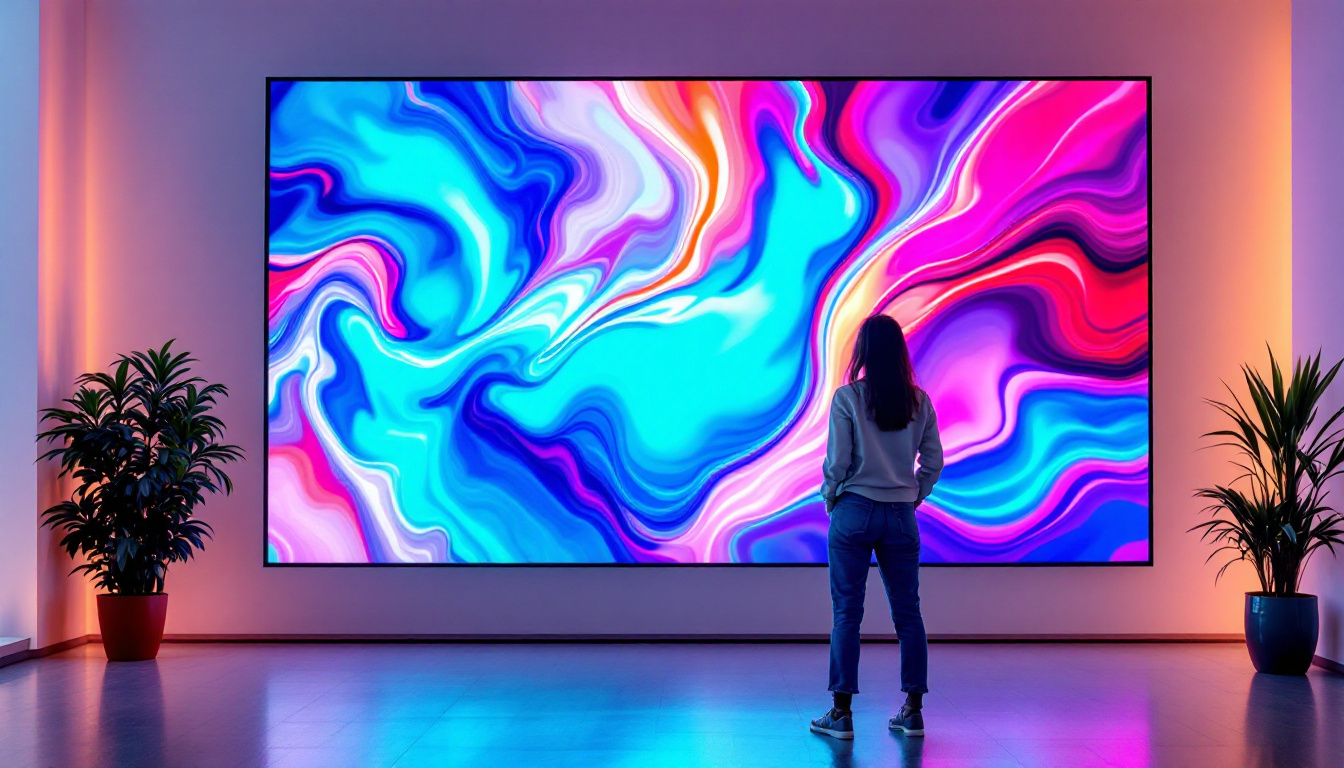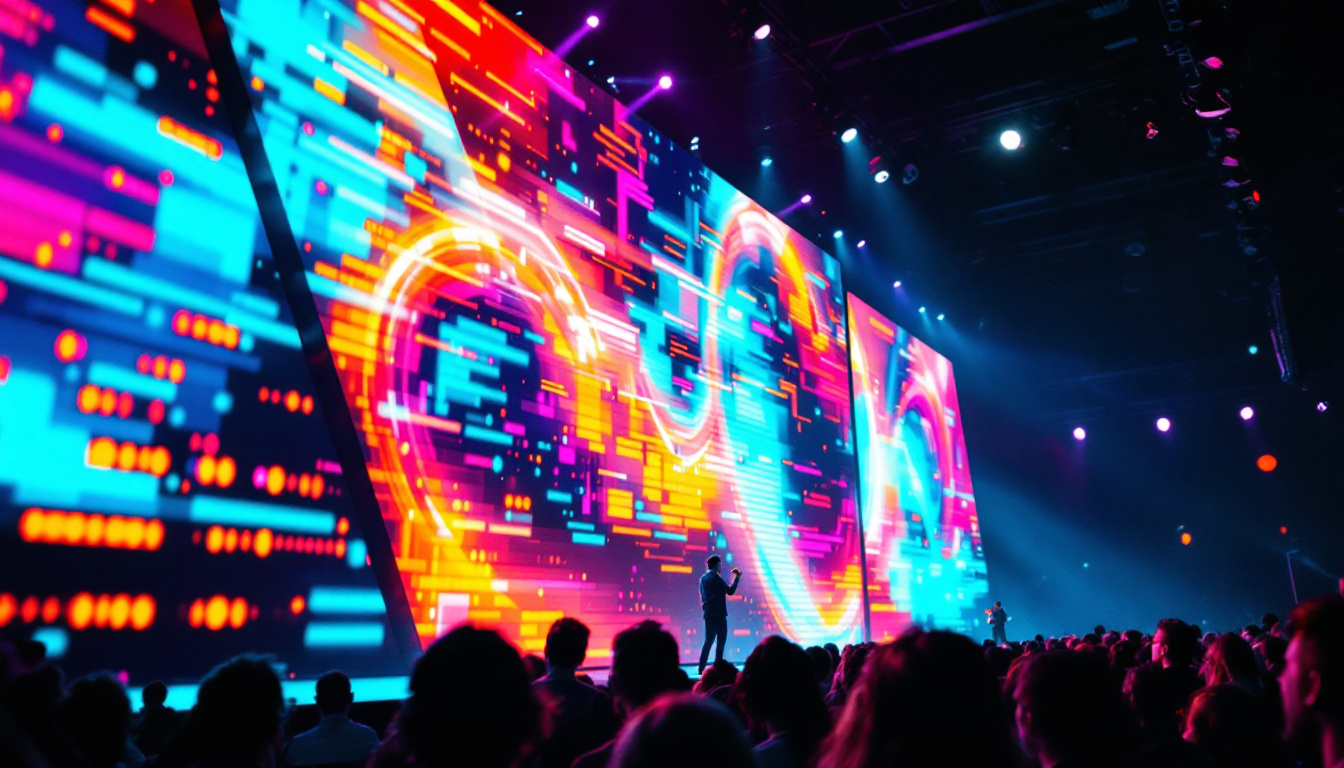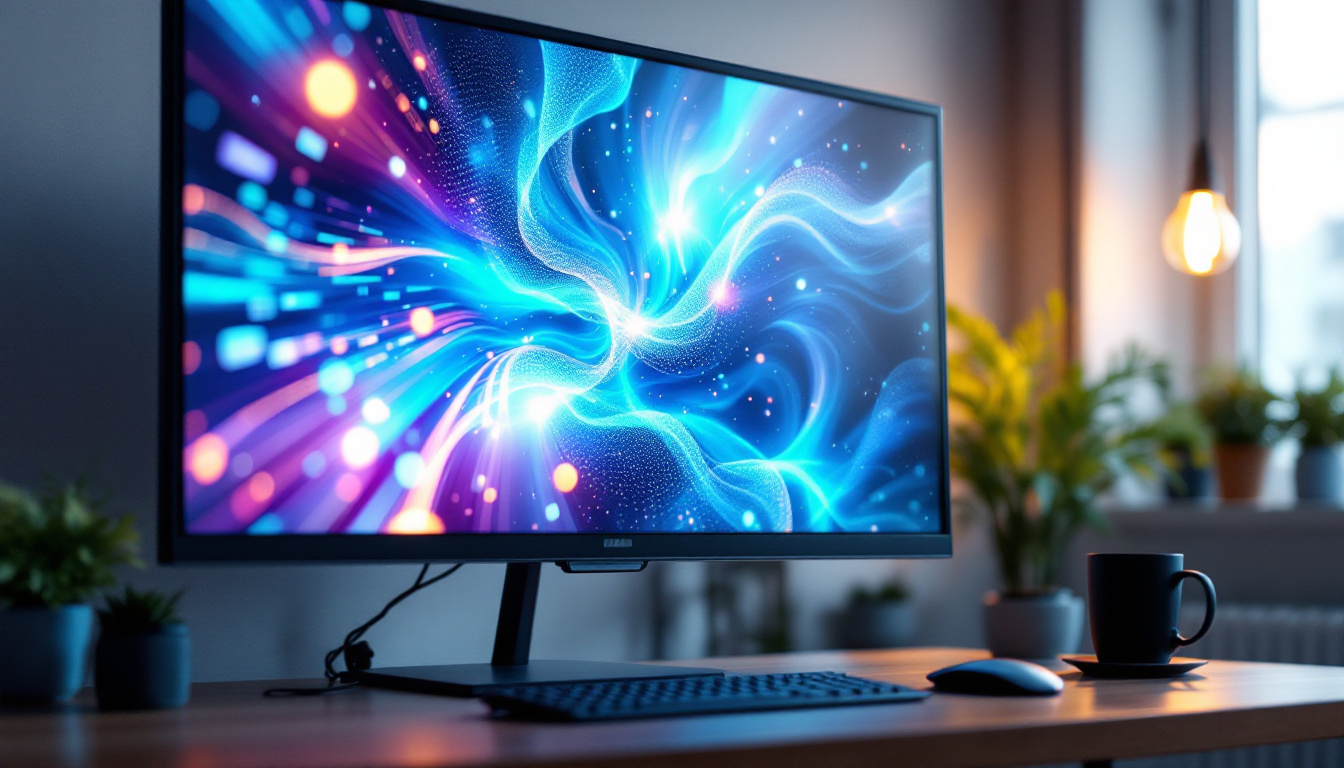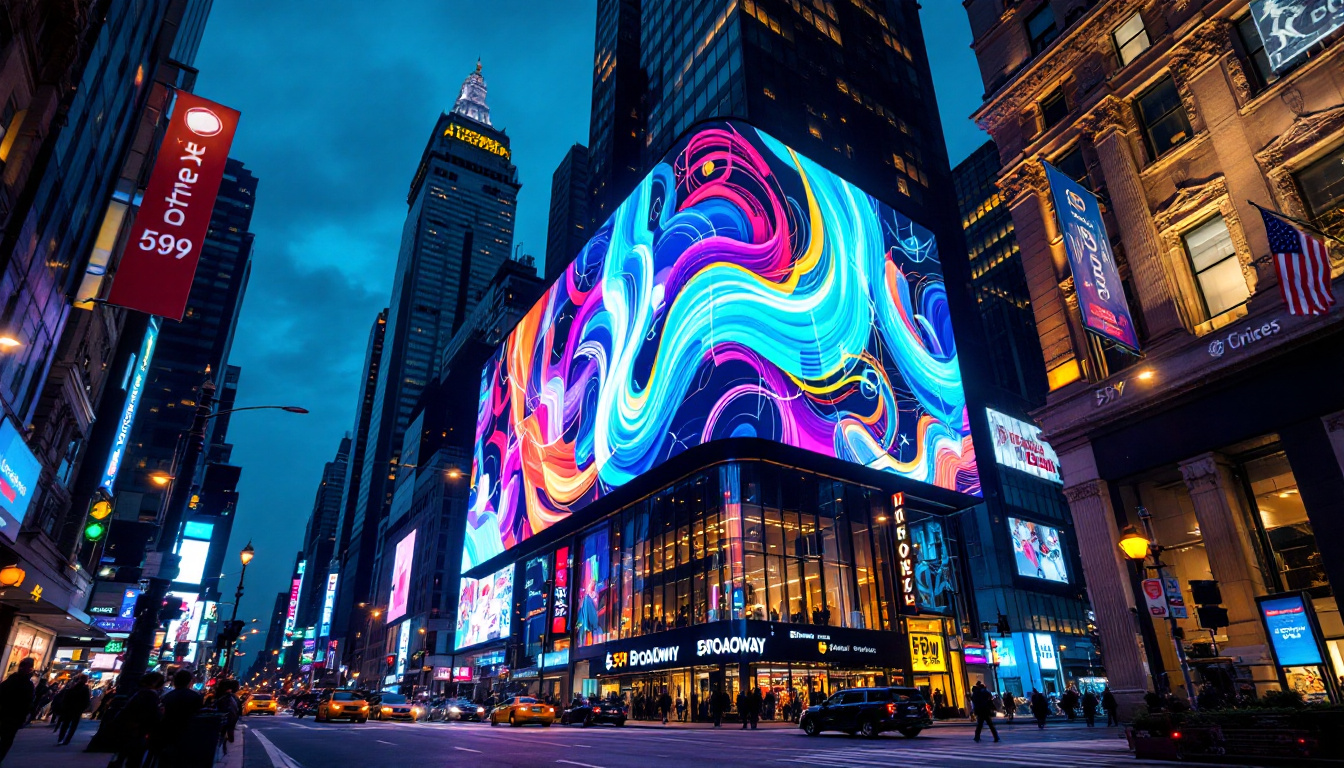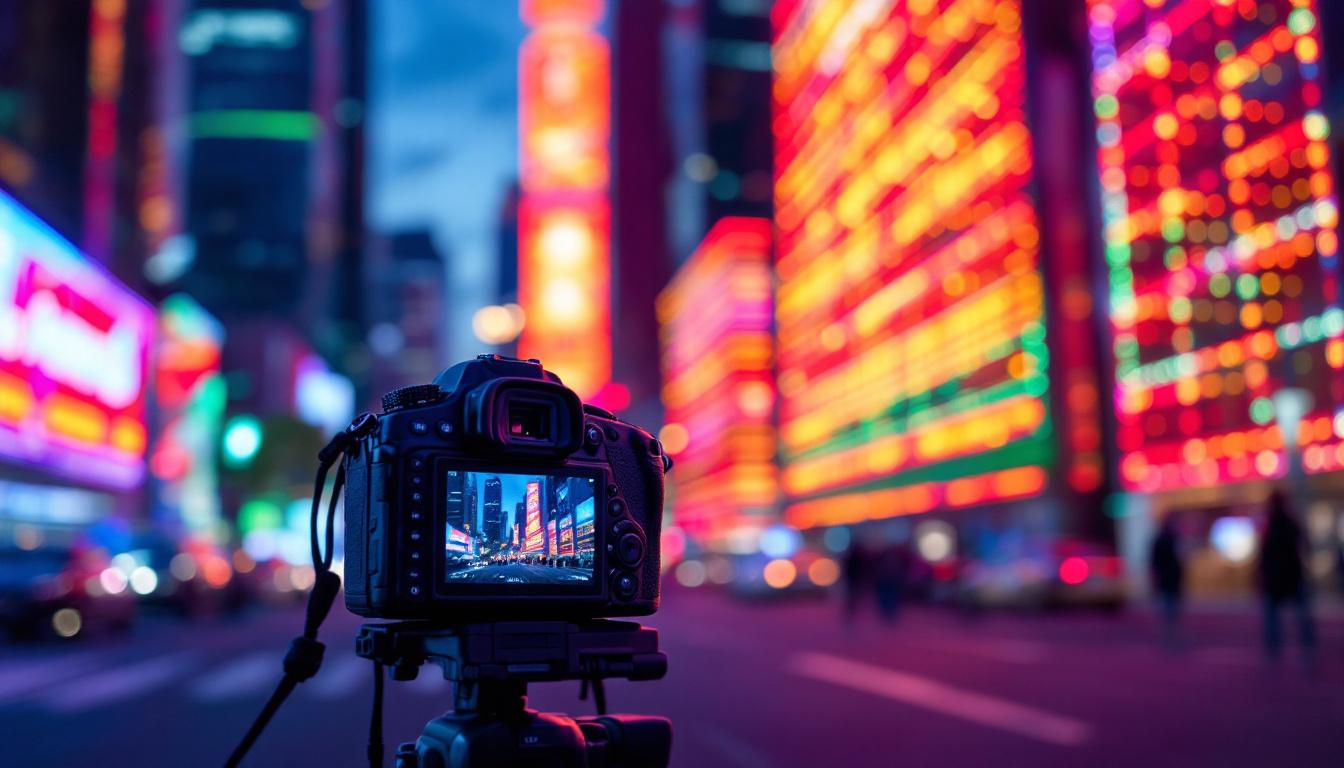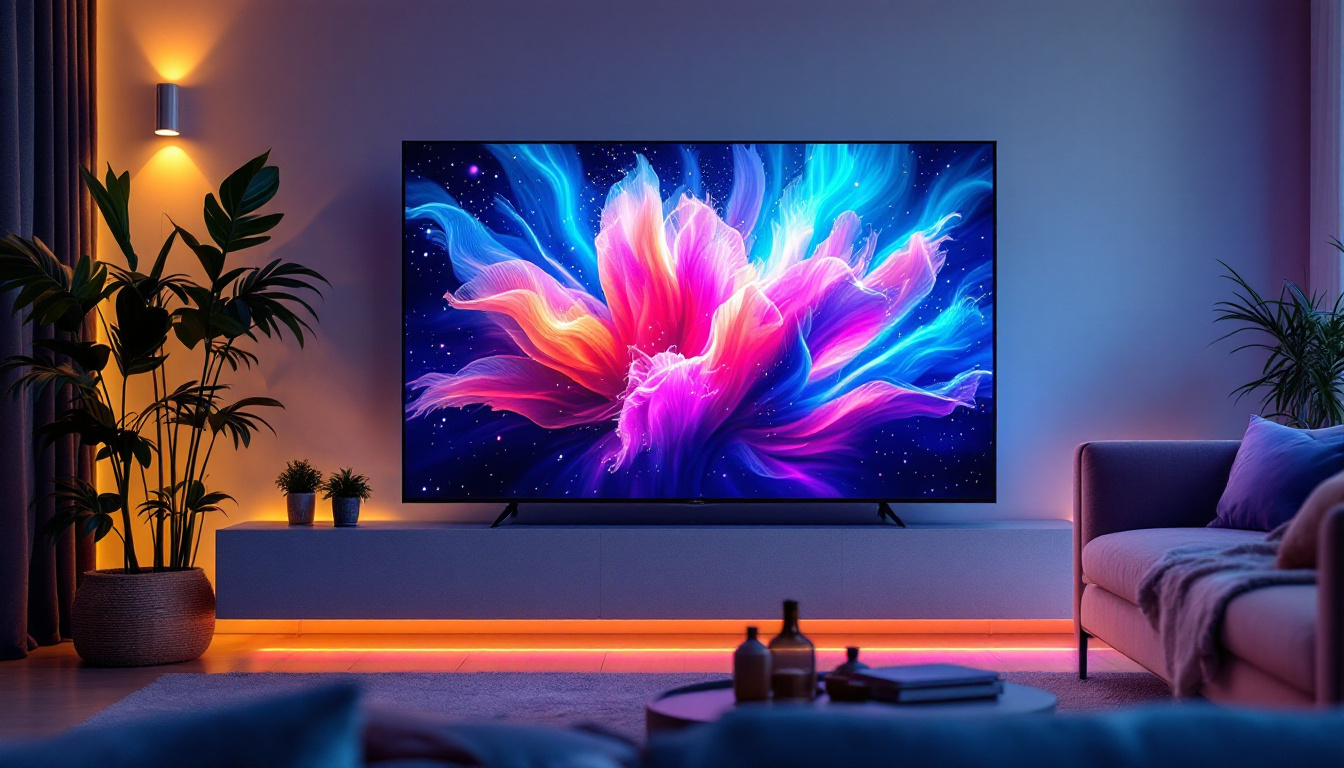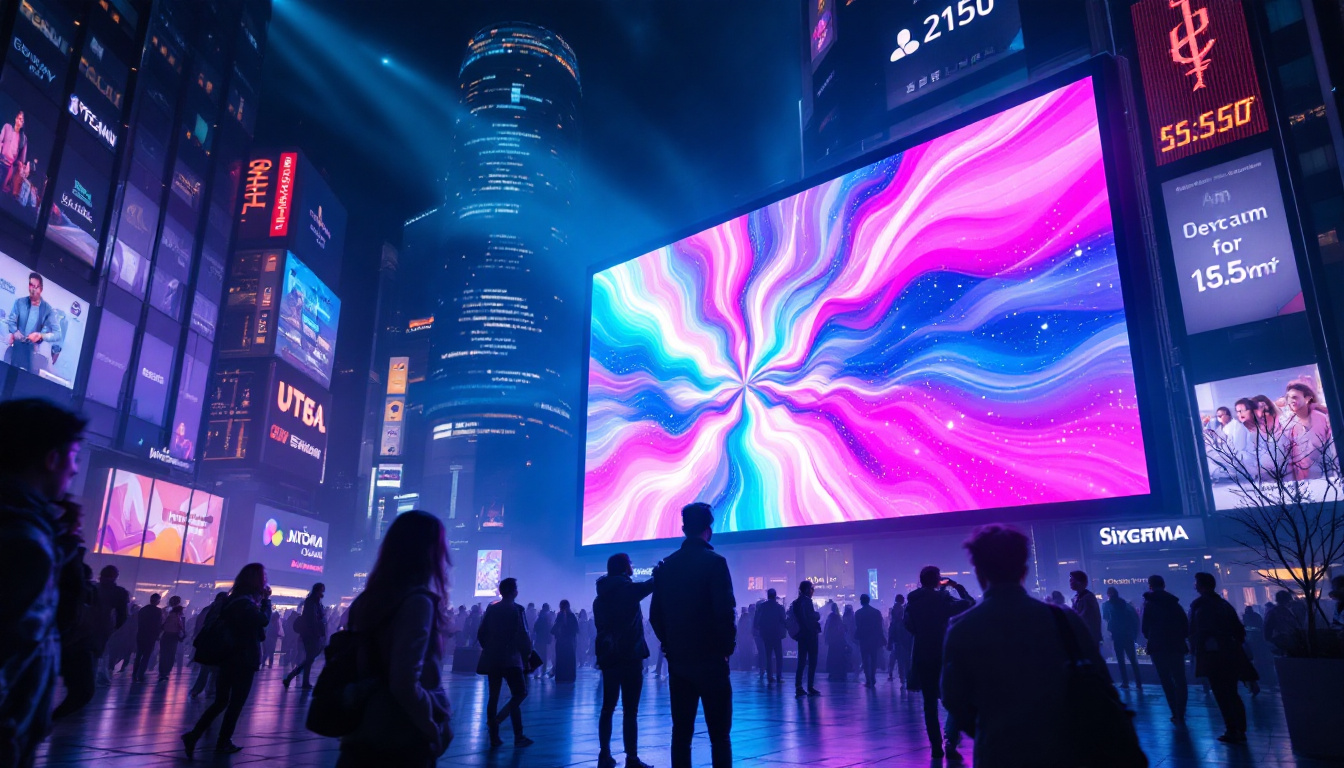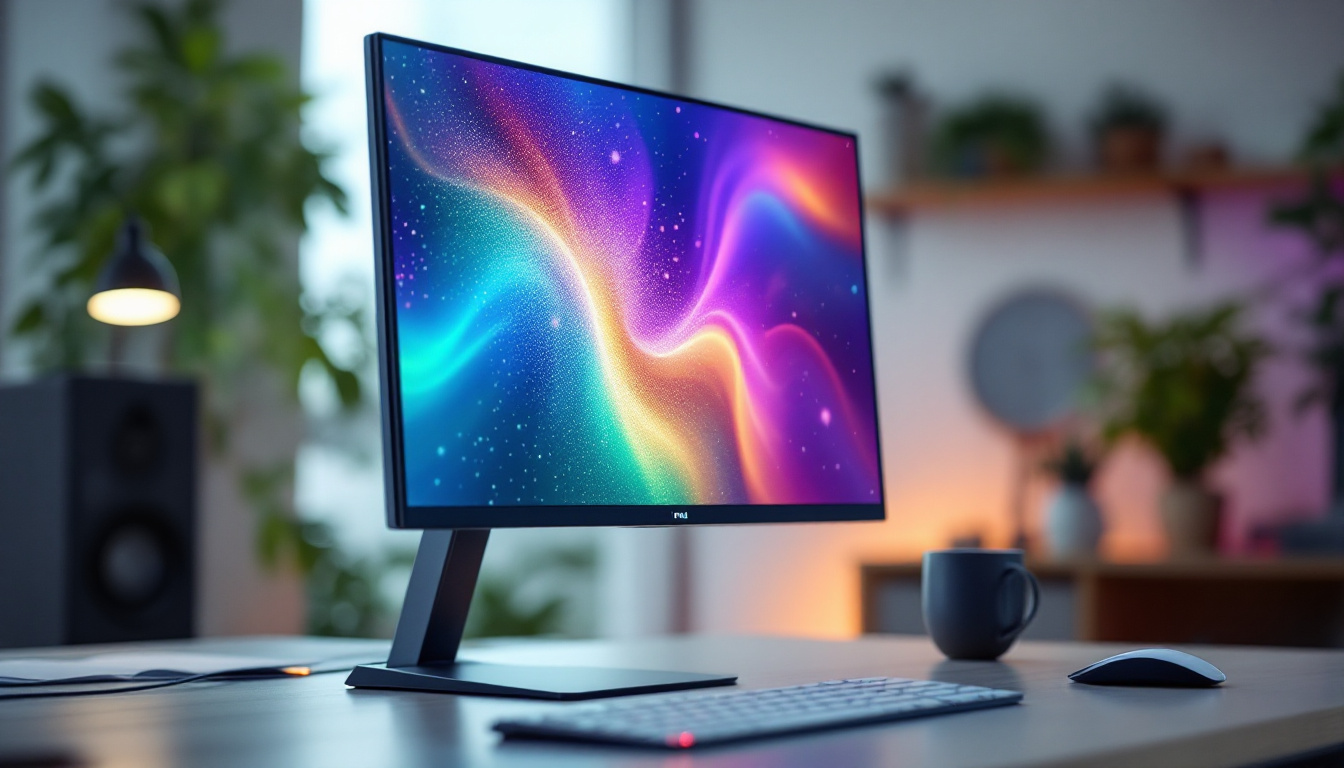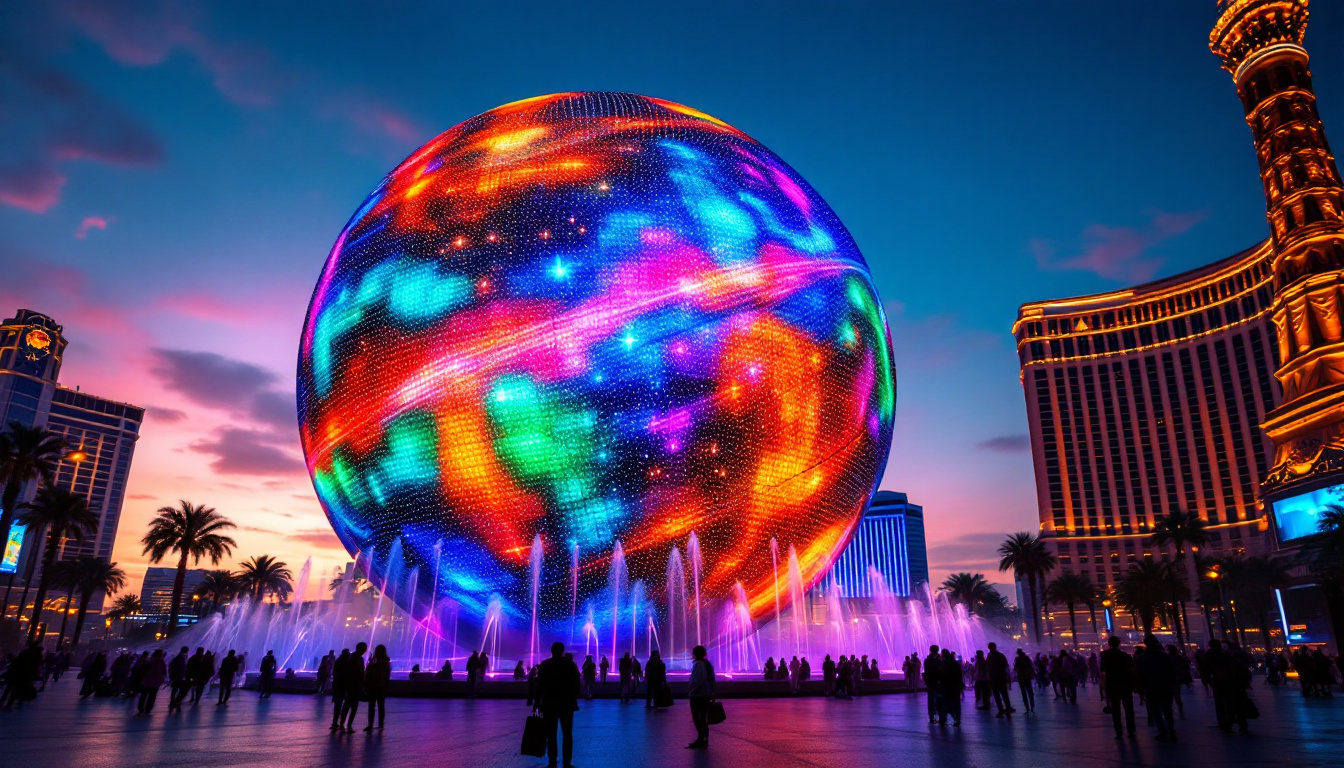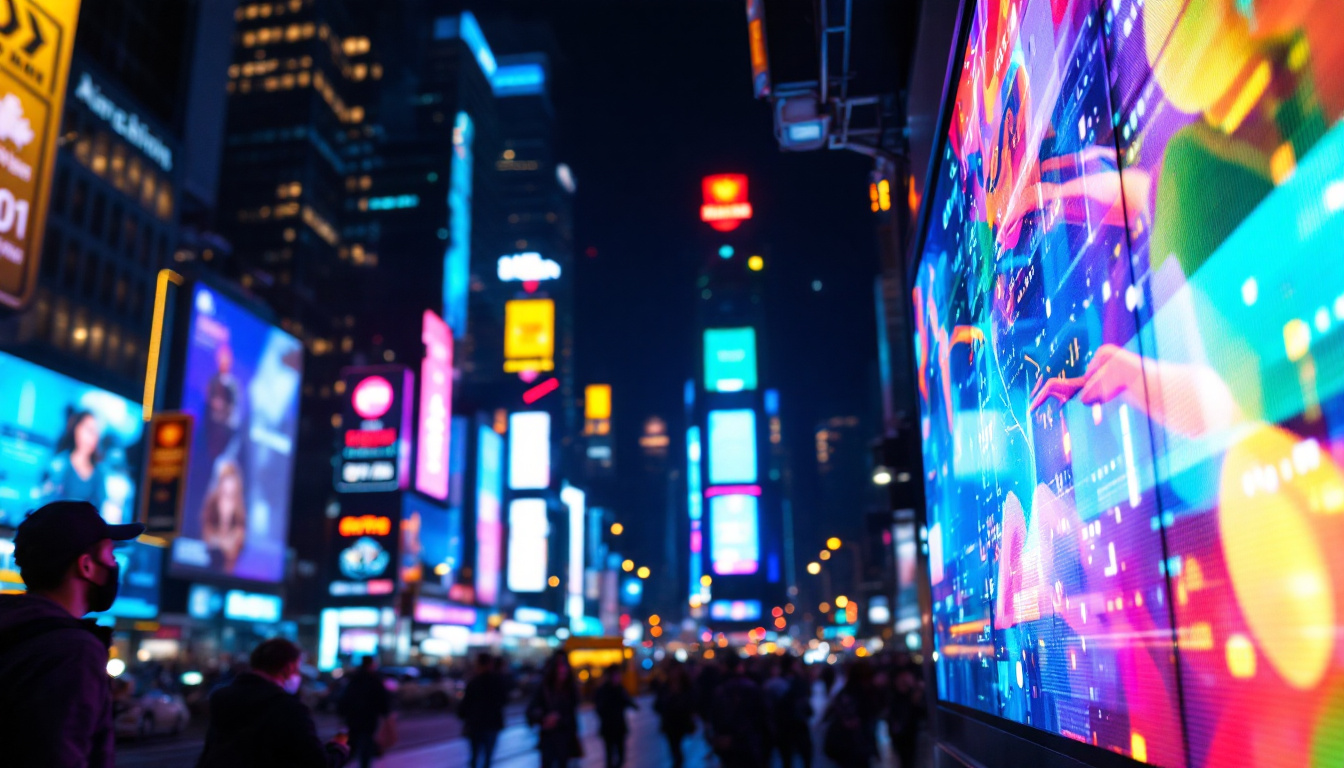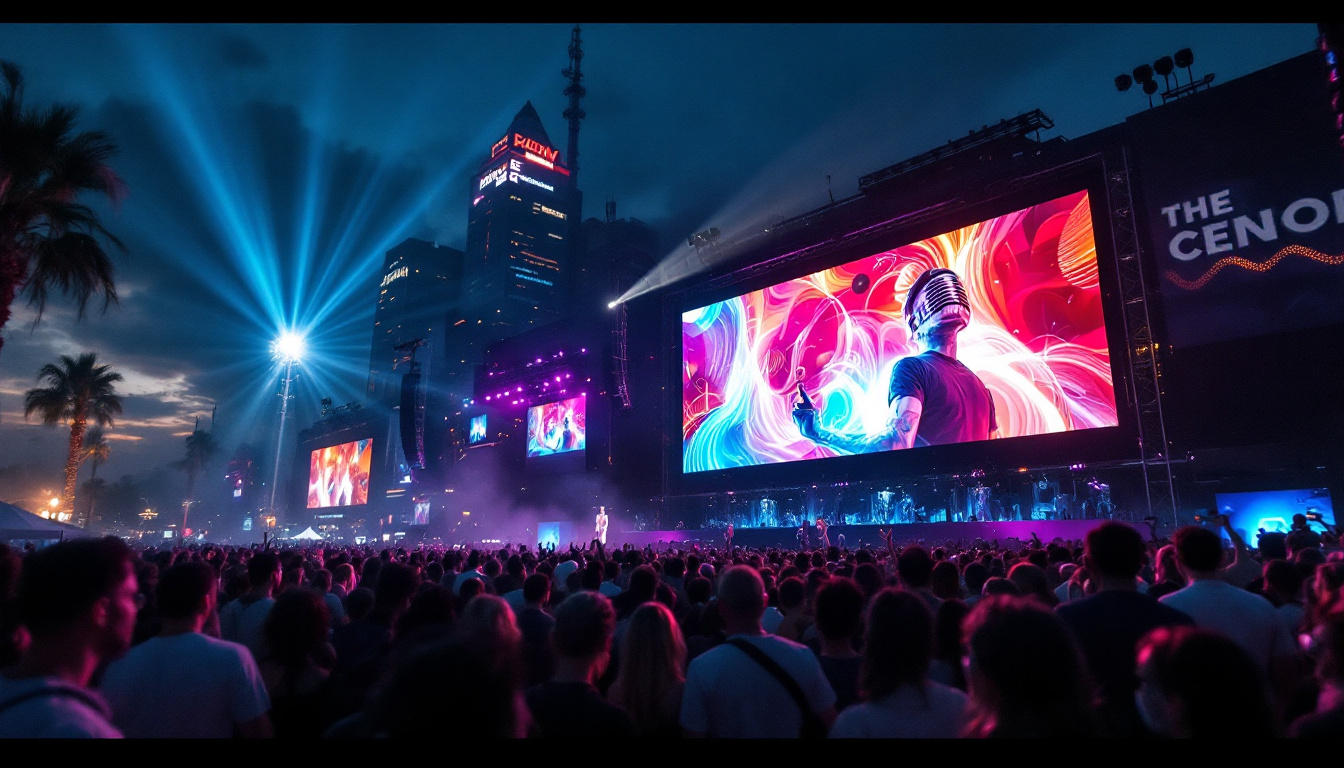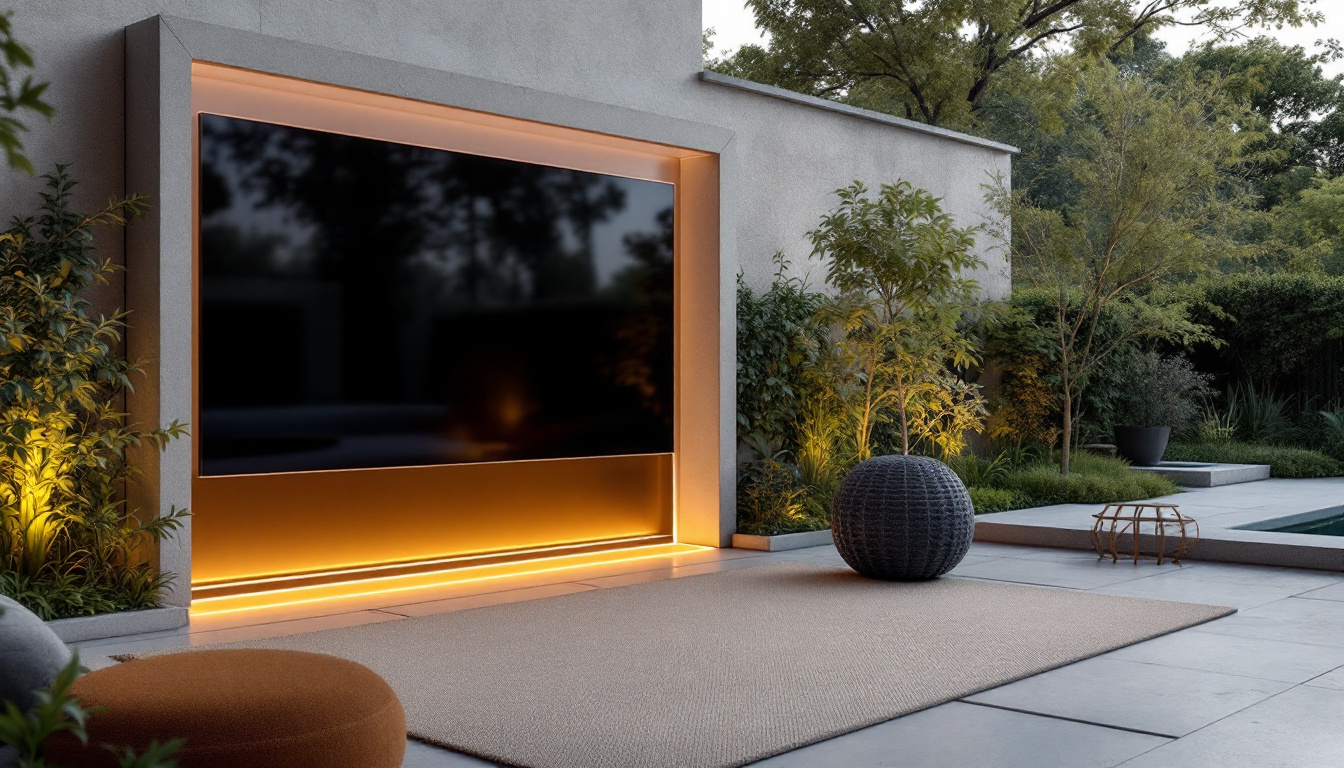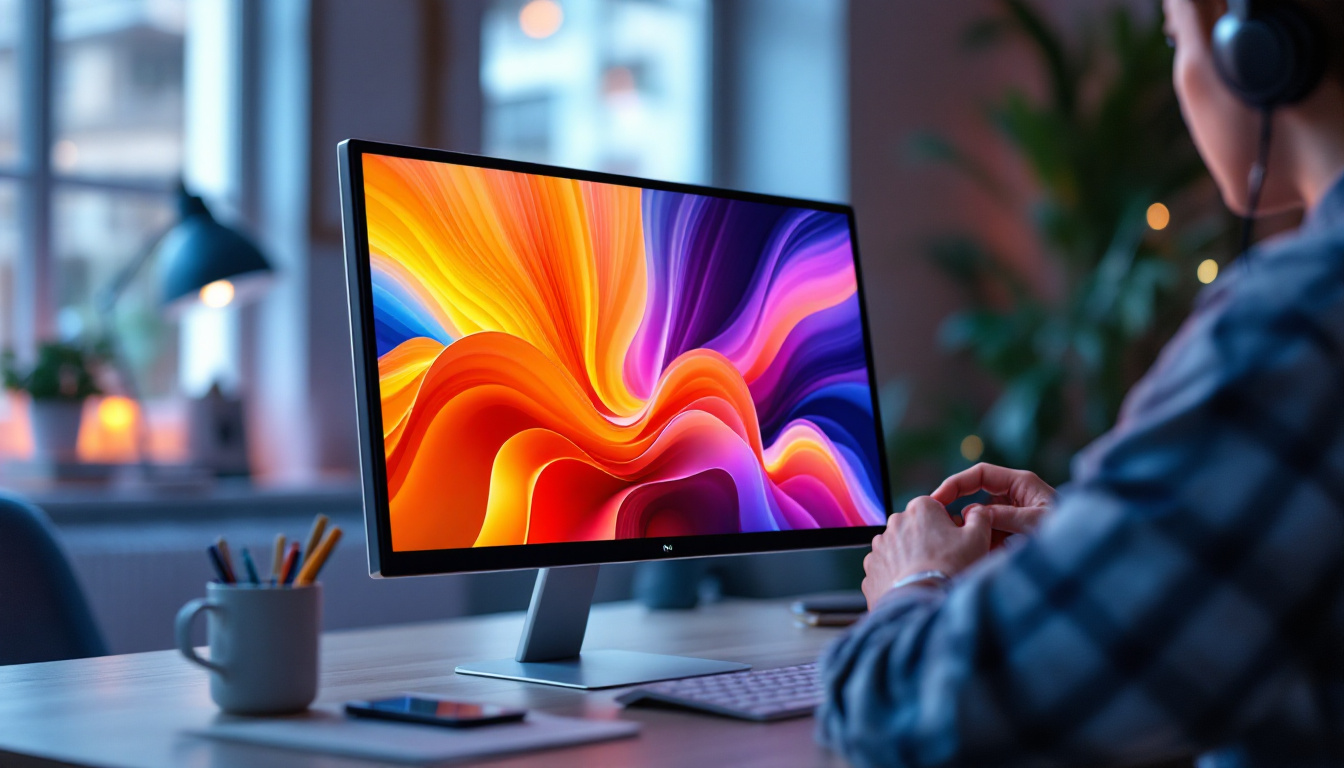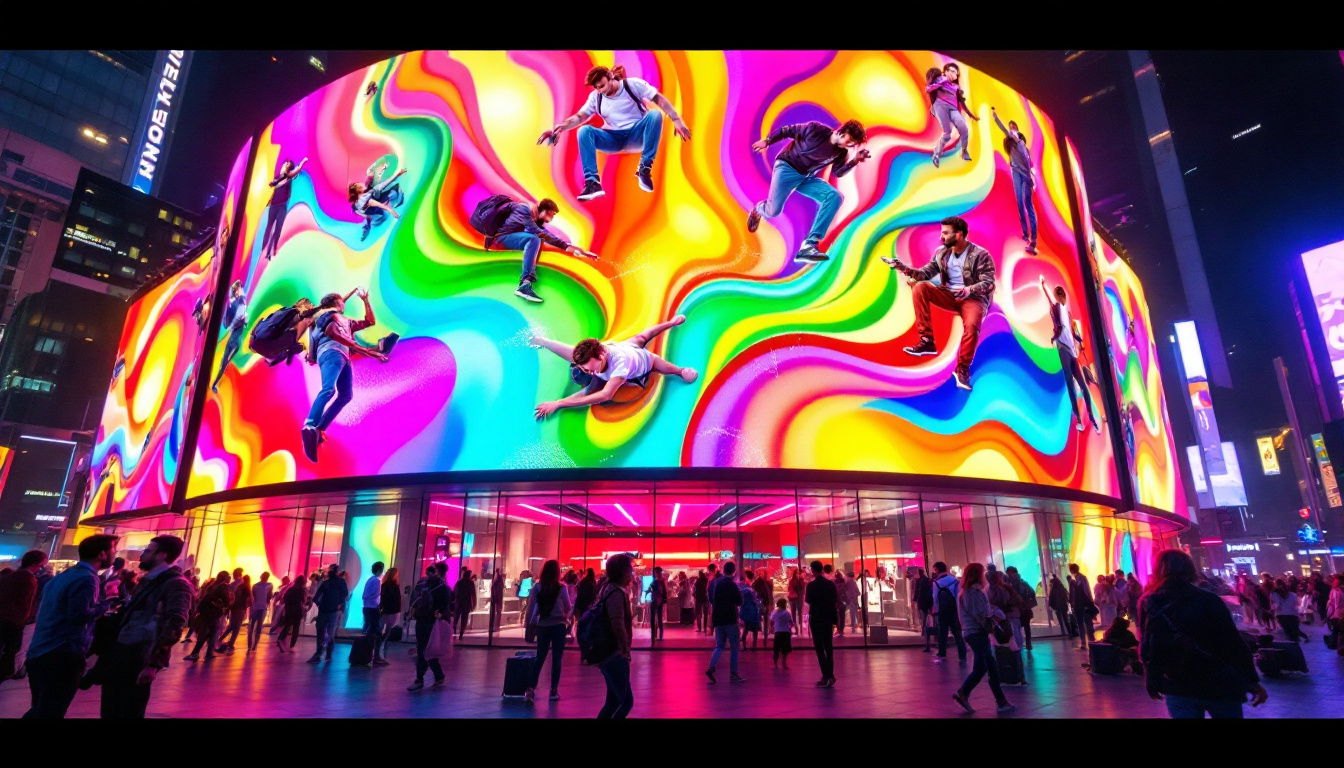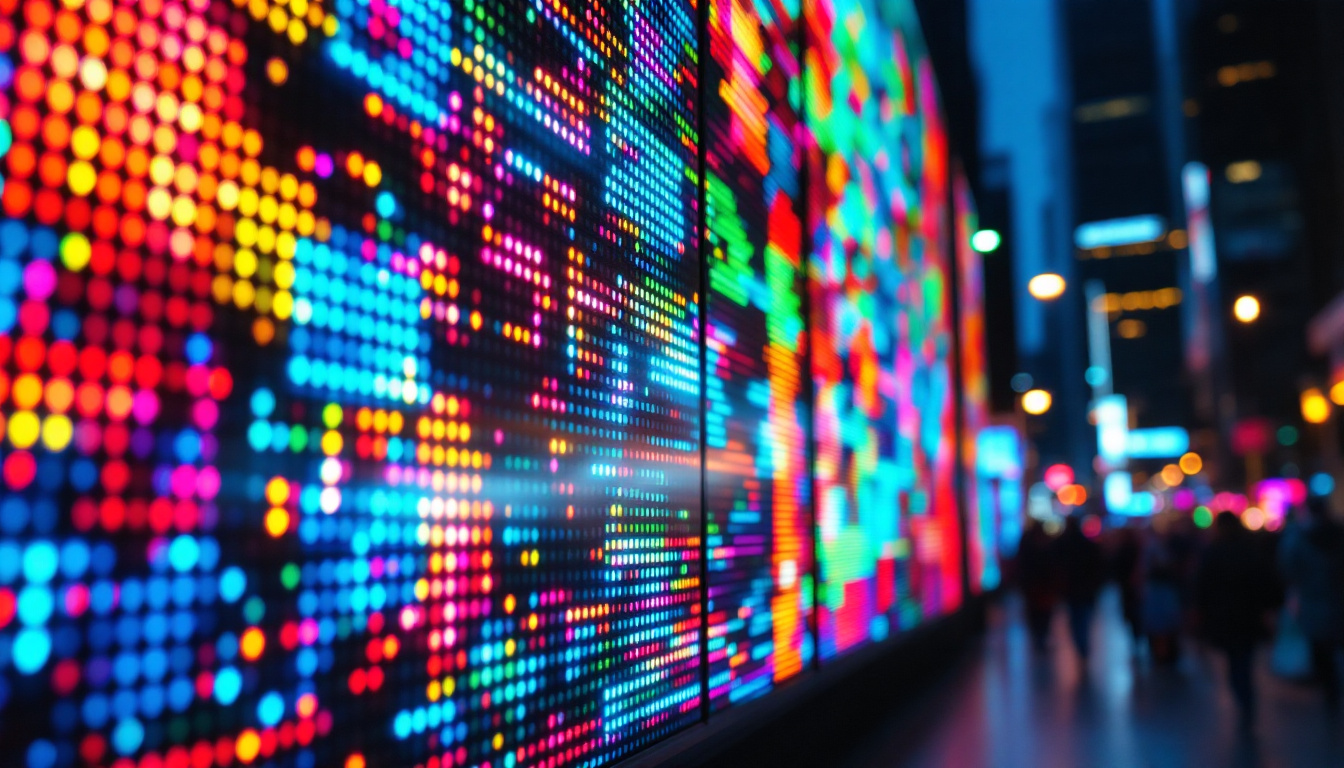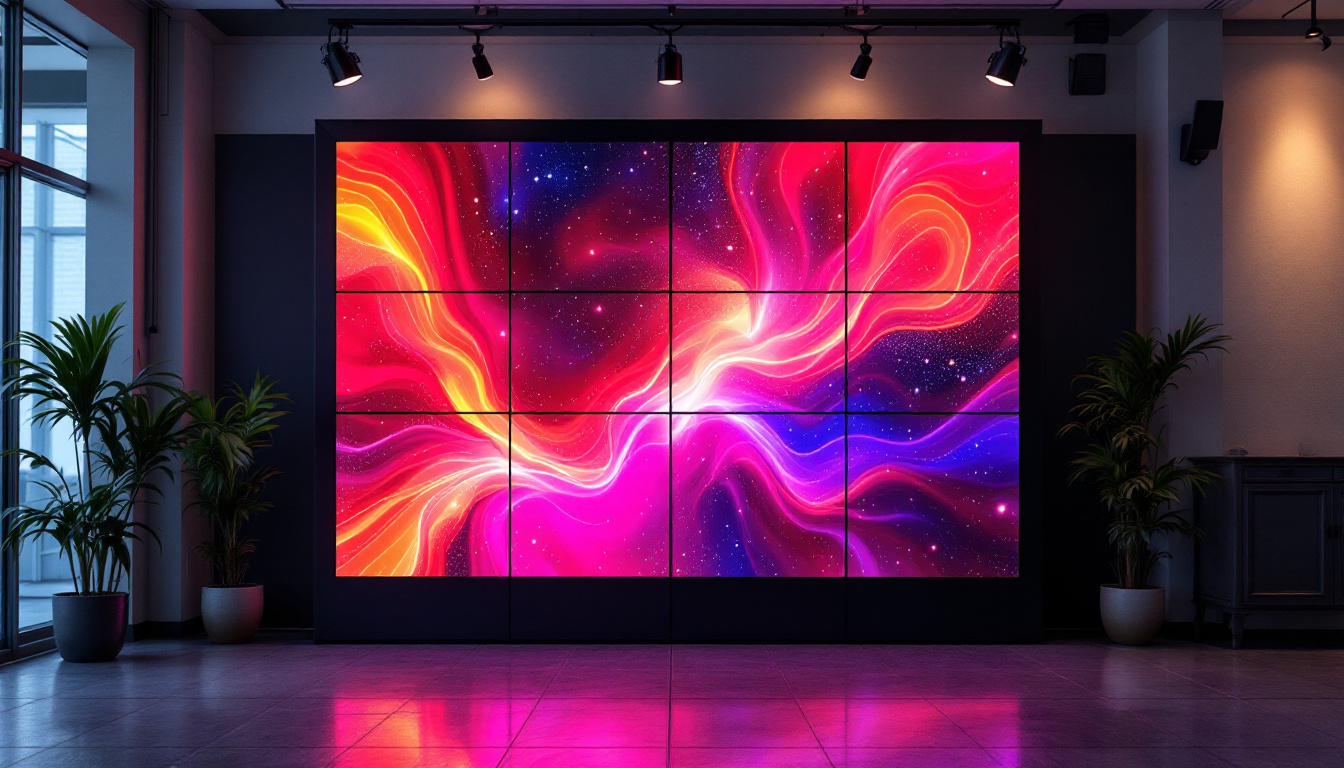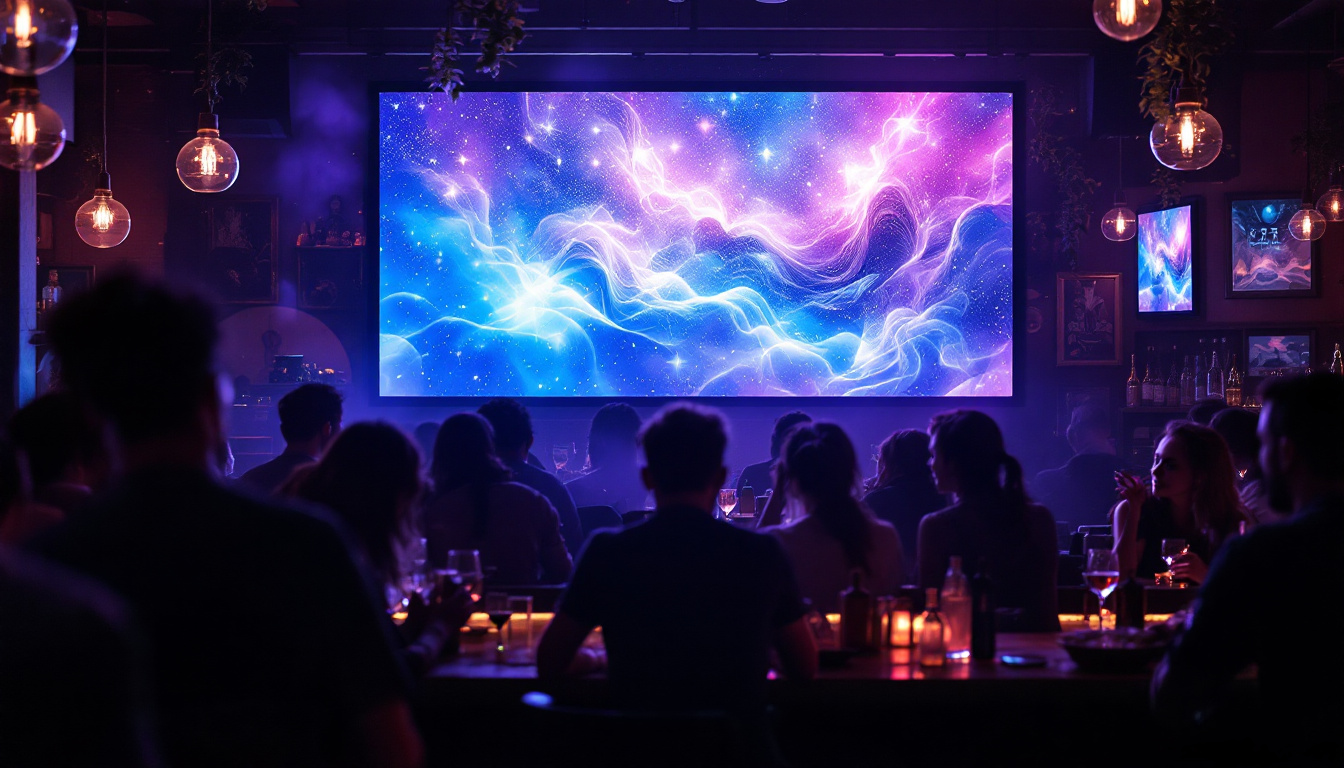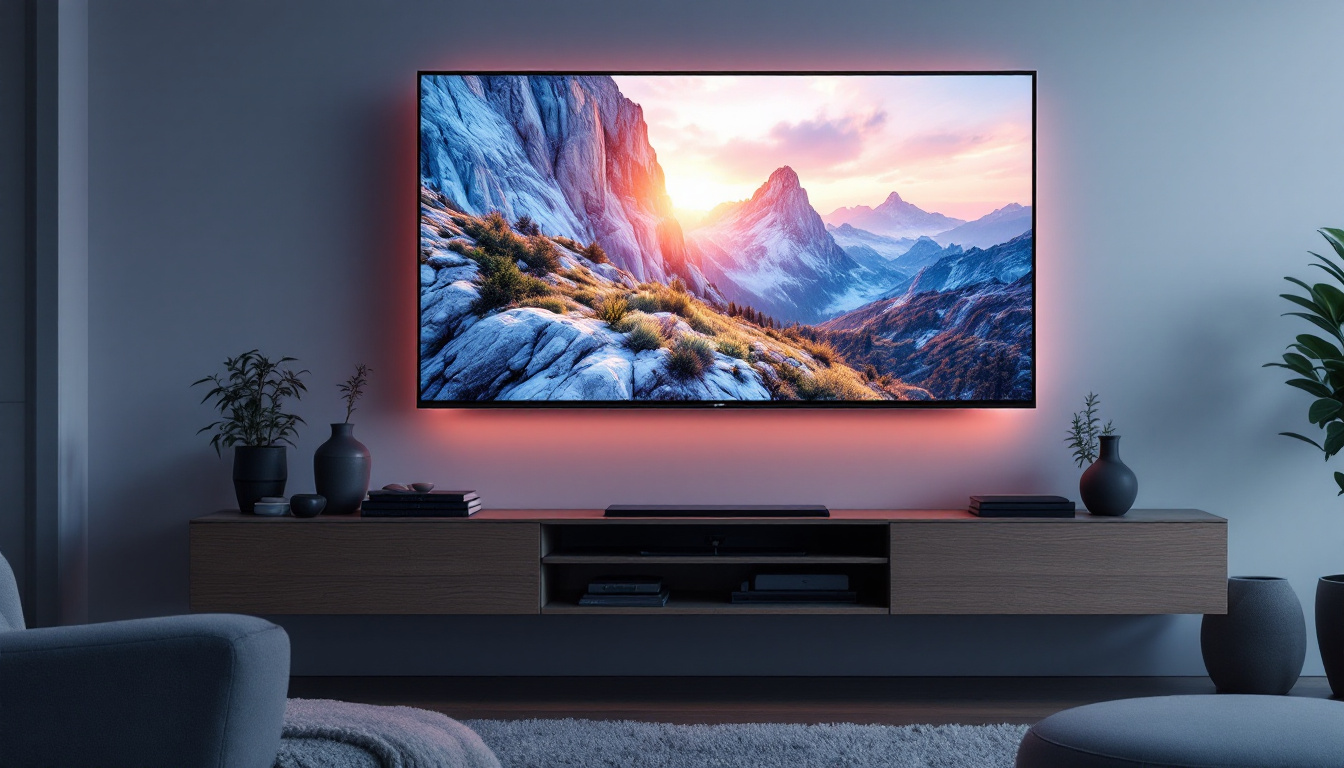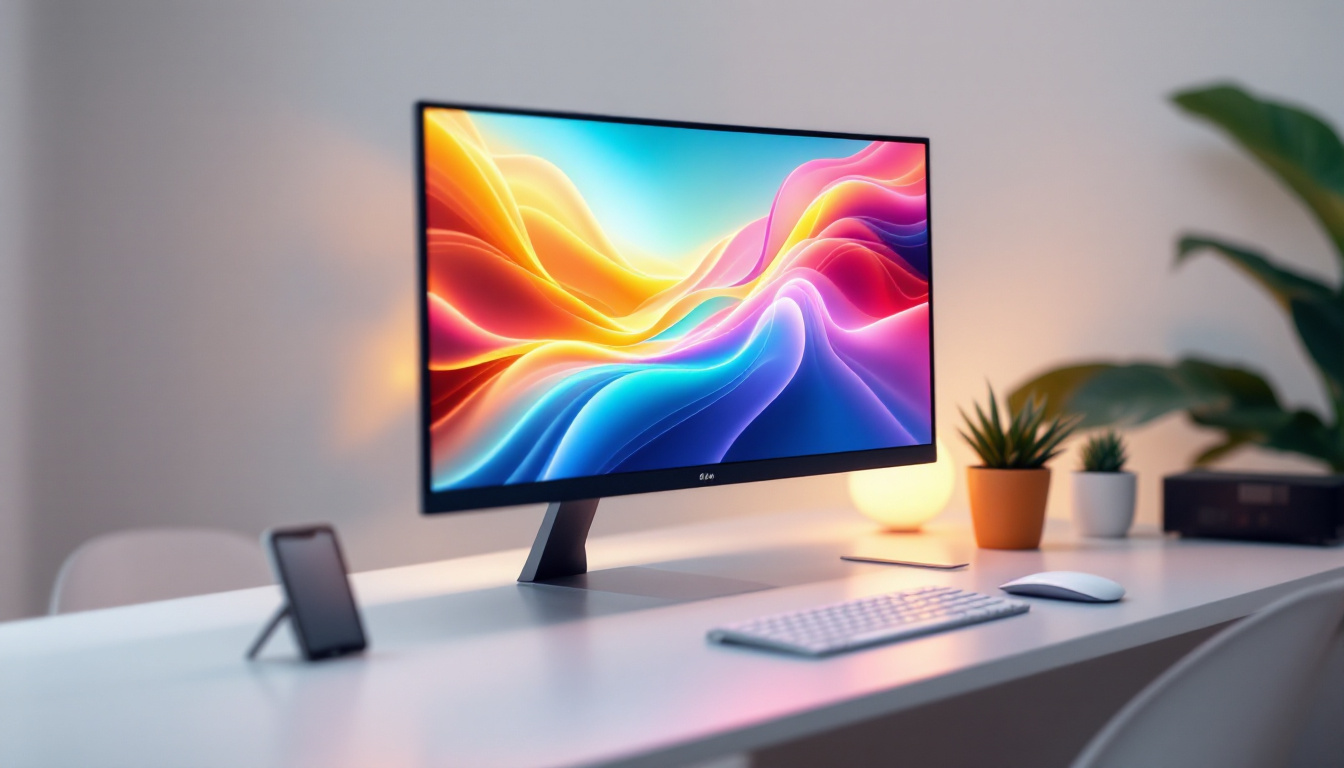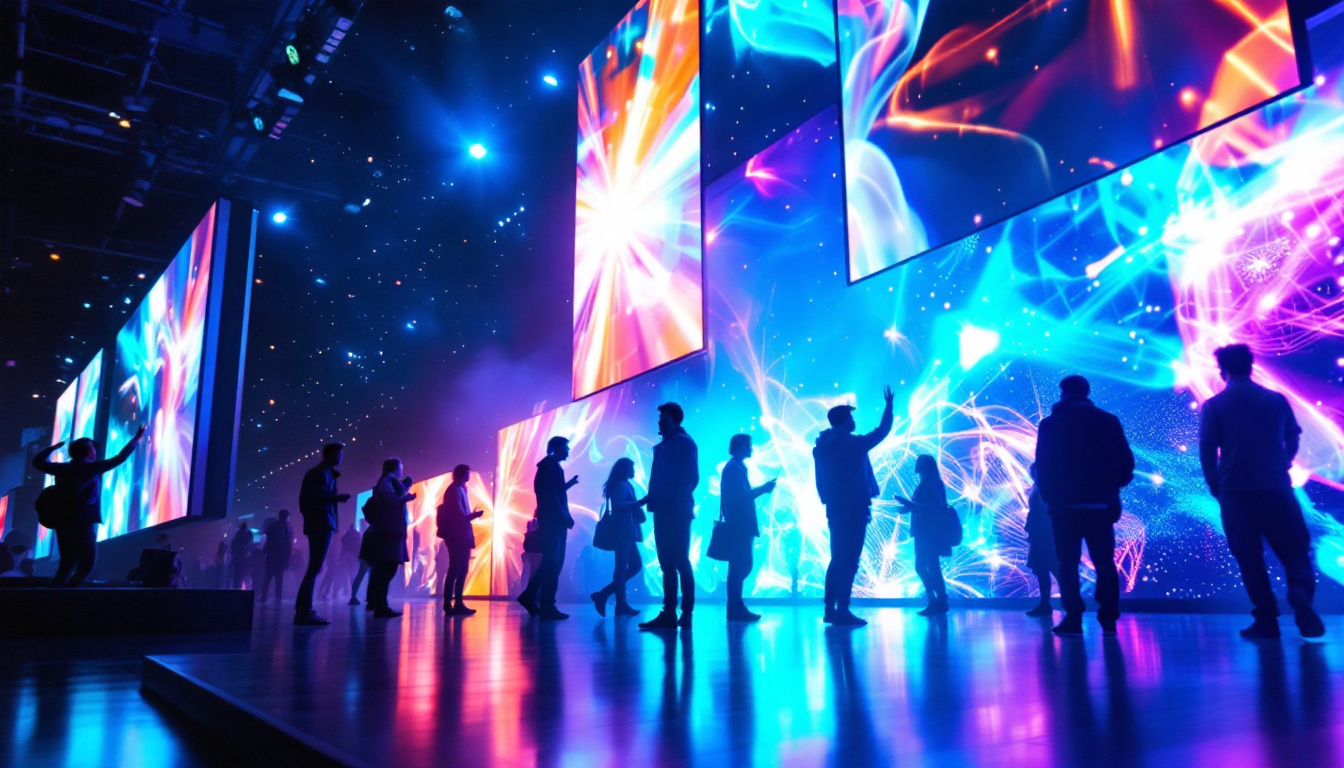In recent years, LED technology has revolutionized the way we perceive visual displays. From billboards to smartphones, LED displays are everywhere, providing vibrant colors and high-quality images. Among the various specifications that define LED displays, pixel pitch plays a crucial role in determining the display’s clarity and usability. One such specification is the “4In” LED, which refers to a pixel pitch of 4 millimeters. This article delves into the intricacies of 4In LED displays, exploring their technology, applications, and advantages.
Understanding LED Technology
Light Emitting Diodes (LEDs) are semiconductor devices that emit light when an electric current passes through them. Unlike traditional incandescent bulbs, LEDs are more energy-efficient and have a longer lifespan. The core technology behind LED displays involves the arrangement of these diodes in a grid formation, where each pixel is made up of individual red, green, and blue (RGB) LEDs. This RGB combination allows for a wide spectrum of colors to be produced, enabling vibrant and dynamic displays that can capture attention and convey messages effectively.
Furthermore, the efficiency of LEDs contributes significantly to their growing popularity in various applications. They consume significantly less power than incandescent or fluorescent lights, which not only reduces electricity bills but also minimizes environmental impact. The durability of LEDs, which can last up to 50,000 hours or more, means less frequent replacements, further enhancing their cost-effectiveness. As technology advances, the development of smart LED systems that can be controlled remotely and programmed for specific tasks is becoming increasingly common, leading to even greater versatility in their use.
The Basics of Pixel Pitch
Pixel pitch is a critical factor in determining the quality of an LED display. It refers to the distance between the centers of two adjacent pixels, measured in millimeters. A smaller pixel pitch results in a higher pixel density, which translates to sharper images and finer details. For example, a 4mm pixel pitch means that the distance between pixels is 4 millimeters, making it suitable for close viewing distances. In contrast, larger pixel pitches are often used for displays viewed from a distance, such as billboards, where the finer details are less critical. Therefore, understanding pixel pitch is essential for selecting the right display for specific environments and applications.
Moreover, advancements in pixel pitch technology have led to the development of ultra-fine pitch displays that can achieve resolutions comparable to traditional high-definition screens. This has opened new avenues for applications in areas such as virtual reality, gaming, and high-end advertising, where image quality is paramount. As manufacturers continue to innovate, the trend towards smaller pixel pitches is likely to grow, allowing for even more immersive and visually stunning experiences.
Types of LED Displays
LED displays can be categorized into various types based on their application and technology. Common types include:
- Indoor LED Displays: Typically used in venues such as shopping malls, airports, and conference rooms, these displays offer high brightness and clarity. They are designed to perform well in controlled lighting environments, ensuring that the content is easily visible without straining the eyes.
- Outdoor LED Displays: Designed to withstand harsh weather conditions, outdoor displays are brighter and more robust, making them ideal for advertising and public information. These displays often feature protective coatings and enhanced cooling systems to ensure longevity and performance in varying climates.
- Transparent LED Displays: These innovative displays allow light to pass through, making them suitable for window displays and architectural applications. By blending seamlessly with their surroundings, transparent LED displays can create stunning visual effects while maintaining the aesthetic appeal of the environment.
Additionally, there are specialized LED displays such as flexible LED screens that can be curved or shaped to fit unique spaces, enhancing creative possibilities in design and advertising. The versatility of LED technology continues to inspire new applications, from sports arenas that use large-scale displays for live event coverage to interactive installations that engage audiences in dynamic ways. As the market evolves, the potential for LED displays to transform communication and entertainment is virtually limitless.
Advantages of 4In LED Displays
4In LED displays come with a plethora of advantages that make them a preferred choice for many applications. Their unique features cater to various needs, from advertising to entertainment.
High Resolution and Clarity
One of the most significant benefits of a 4In LED display is its high resolution. With a pixel pitch of just 4 millimeters, these displays can produce sharp images and vibrant colors, making them ideal for environments where visual quality is paramount. Whether used for digital signage or in a concert setting, the clarity of a 4In display ensures that every detail is visible, even from a distance.
Energy Efficiency
Energy consumption is a crucial factor in the sustainability of any technology. 4In LED displays are designed to be energy-efficient, consuming significantly less power compared to traditional display technologies. This not only reduces operational costs but also minimizes the carbon footprint, making them an environmentally friendly option.
Versatility in Applications
The versatility of 4In LED displays makes them suitable for a wide range of applications. They can be used in:
- Retail Environments: Enhancing customer engagement through dynamic advertising and promotions.
- Corporate Settings: Displaying presentations, videos, and live feeds during conferences and meetings.
- Entertainment Venues: Providing stunning visuals for concerts, sports events, and theatrical performances.
Applications of 4In LED Displays
The applications of 4In LED displays are vast and varied, owing to their adaptability and performance. They are increasingly being integrated into different sectors, enhancing user experience and engagement.
Advertising and Marketing
One of the most prominent uses of 4In LED displays is in advertising. Businesses leverage these displays to showcase their products and services in an eye-catching manner. The vibrant colors and high resolution draw attention, making them effective tools for marketing campaigns. Digital billboards equipped with 4In technology can rotate ads, allowing for multiple messages to be displayed, thus maximizing visibility.
Event Management
In the realm of event management, 4In LED displays play a pivotal role. They are often used in stages for concerts, conferences, and exhibitions. The ability to display high-resolution graphics and videos enhances the overall experience for attendees. Furthermore, these displays can be customized to fit various themes and branding requirements, making them a flexible choice for event organizers.
Transportation Hubs
Transportation hubs such as airports and train stations utilize 4In LED displays for information dissemination. These displays provide real-time updates on flight schedules, train arrivals, and other essential information. Their clarity and visibility ensure that travelers can easily read the information, contributing to a smoother travel experience.
Technical Specifications of 4In LED Displays
Understanding the technical specifications of 4In LED displays is crucial for making informed decisions regarding their implementation. Key specifications include brightness, refresh rate, and viewing angle.
Brightness Levels
Brightness is a vital specification for LED displays, especially for outdoor applications. 4In LED displays typically offer brightness levels ranging from 1,000 to 5,000 nits, ensuring visibility even in direct sunlight. This high brightness level is essential for outdoor advertising, where ambient light can significantly affect the visibility of the content.
Refresh Rate
The refresh rate of an LED display determines how often the image is updated per second. A higher refresh rate results in smoother motion and reduces flickering, which is particularly important for video content. 4In LED displays generally have refresh rates of 60Hz to 120Hz, making them suitable for dynamic content such as live broadcasts and sports events.
Viewing Angle
The viewing angle of an LED display refers to the maximum angle at which the screen can be viewed without significant loss of image quality. 4In LED displays typically offer wide viewing angles of up to 160 degrees, ensuring that content remains clear and vibrant from various positions. This feature is particularly beneficial in crowded spaces where viewers may be positioned at different angles relative to the display.
Installation and Maintenance Considerations
Installing and maintaining 4In LED displays requires careful planning and execution to ensure optimal performance. Various factors must be considered to achieve the best results.
Installation Requirements
When installing a 4In LED display, several requirements must be met. These include:
- Structural Support: The display must be mounted on a sturdy structure capable of supporting its weight.
- Power Supply: Adequate power supply and backup systems should be in place to ensure uninterrupted operation.
- Connectivity: Proper cabling and network connections are essential for content management and display control.
Regular Maintenance
Maintaining a 4In LED display is crucial for ensuring its longevity and performance. Regular maintenance tasks include:
- Cleaning: Dust and debris can accumulate on the display surface, affecting image quality. Regular cleaning is necessary to maintain clarity.
- Software Updates: Keeping the display’s software up to date ensures optimal performance and security.
- Inspection: Regular inspections can help identify potential issues before they escalate, ensuring the display remains operational.
Future Trends in LED Display Technology
The LED display industry is constantly evolving, with new technologies and innovations emerging regularly. Understanding these trends can provide insight into the future of displays, including the 4In LED segment.
Advancements in Pixel Technology
Future advancements in pixel technology are expected to enhance the performance of LED displays. Innovations such as MicroLED and MiniLED are paving the way for even smaller pixel pitches and improved image quality. These technologies promise to deliver higher brightness levels, better color accuracy, and increased energy efficiency.
Integration with Smart Technology
As smart technology continues to permeate various industries, LED displays are also becoming smarter. Integration with IoT (Internet of Things) devices allows for real-time content updates and remote management. This capability is particularly beneficial for businesses that require dynamic advertising and instant information dissemination.
Sustainability Initiatives
With growing awareness of environmental issues, the LED display industry is focusing on sustainability. Future trends may include the development of eco-friendly materials and energy-efficient technologies. These initiatives aim to reduce the environmental impact of manufacturing and operating LED displays, aligning with global sustainability goals.
Conclusion
4In LED displays represent a significant advancement in display technology, offering high resolution, energy efficiency, and versatility across various applications. Their ability to deliver vibrant visuals makes them an ideal choice for advertising, event management, and information dissemination in transportation hubs. As technology continues to evolve, the future of LED displays looks promising, with advancements in pixel technology, smart integration, and sustainability initiatives paving the way for even greater innovations.
Understanding the intricacies of 4In LED displays is essential for businesses and organizations looking to leverage this technology effectively. By considering the technical specifications, installation requirements, and maintenance needs, users can maximize the benefits of these displays, ensuring they remain a valuable asset in an increasingly visual world.
Discover LumenMatrix’s Innovative LED Solutions
Ready to elevate your visual display capabilities? Embrace the future with LumenMatrix’s comprehensive range of LED display modules. From captivating Indoor LED Wall Displays to dynamic Outdoor LED Wall Displays, and from versatile Vehicle LED Displays to sleek LED Poster Displays, LumenMatrix is at the forefront of creating immersive visual experiences. Whether you’re looking to engage audiences in sports arenas with LED Sports Displays, make a statement with Floor LED Displays, or customize your message with Custom LED Displays, LumenMatrix has the solution. Experience the revolution in visual communication with our All-in-One LED Displays and LED Transparent Displays. Don’t miss the opportunity to transform your space and captivate your audience. Check out LumenMatrix LED Display Solutions today and see your vision come to life with clarity and impact.

